How Biology Inspires Future Technology
Bioengineers at Harvard’s Wyss Institute showcase their ingenious medical, industrial and environmental designs at the Cooper Hewitt
/https://tf-cmsv2-smithsonianmag-media.s3.amazonaws.com/filer/61/0b/610b7502-435e-44ec-915e-0b7fac3a4c16/1989-62-10-mass-digi.jpg)
It feels a bit like Alice in Wonderland. Kilobots, tiny robots on stick legs, swarm and, somehow, organize themselves into specific configurations, like ants. An artificial Robobee, the size of a honeybee that is powered by solar cells, is about to levitate. It has the potential, like a mini-drone, to aid in search-and-rescue missions, do environmental mentoring and pollinate flowers. A bionic leaf can harness sunlight and, through artificial photosynthesis, store energy.
These are a few of the fascinating, futuristic and elegant engineering contraptions that are currently on display in a contemporary “cabinet of curiosities” at the Cooper Hewitt, Smithsonian Design Museum in New York City. The Nancy and Edwin Marks Gallery is host to (and supports) the museum’s acclaimed “Selects” series. Twice a year an artist, musician, designer or creator is asked to guest curate a show of his or her own vision with objects gleaned from the 210,000 works in the permanent collection of the museum. Past guest curators include TV host/producer Ellen DeGeneres, fashion designer Thom Browne and the British architect David Adjaye.
For the 18th installation, the museum, for the first time, approached scientists. Matilda McQuaid, the deputy curatorial director of the museum, asked Don Ingber, the founding director of the Wyss Institute for Biologically Inspired Engineering at Harvard University, to put together an exhibition showing how nature inspires design with examples from the museum’s collection.
Now ten years old, the Wyss Institute has 375 full-time scientists and engineers in different fields on staff who collaborate, using biological design principles, to create new technologies for medical, industrial and environmental applications in the real world.
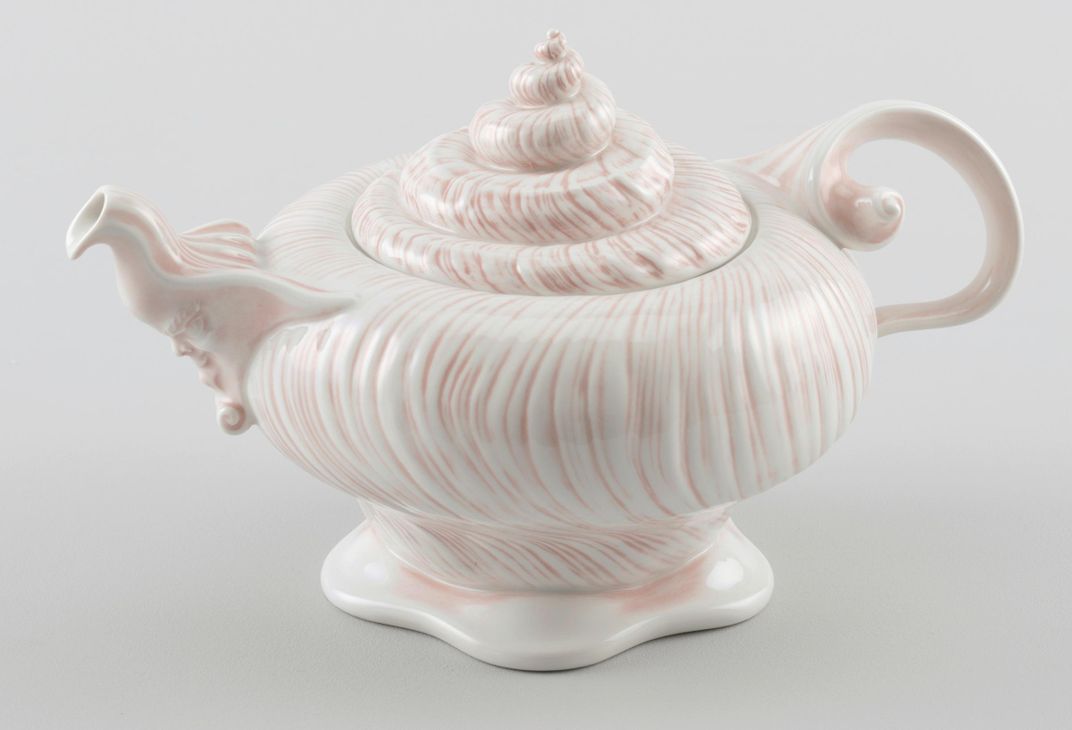
To take just one example, its faculty invented a wearable robotic exoskeleton that provides powered hip-and-knee motion to enable people with spinal cord injuries, even paraplegics, to stand upright, walk and climb. The device is controlled by a wrist-mounted remote.
By providing assistive force at precisely timed intervals, the soft fabric suit can help people expend less energy when walking, reduce fatigue and strain injuries in factory workers and help stroke patients learn to walk again. The device was licensed in 2016 by a private company, ReWalk Robotics, which recently obtained FDA approval to commercialize it for rehabilitation of stroke and sclerosis patients.
“We try to get things out of the lab and into the world,” Ingber explains. The institute is a consortium, affiliated with the design, medical and engineering schools at Harvard as well as Tufts, MIT and other universities, medical schools and hospitals.
“I wanted a scientist and I knew Don was comfortable talking about art and design,” McQuaid says. “I’d known him for years.”
She invited him to tour the museum’s vast warehouse in New Jersey for a day.
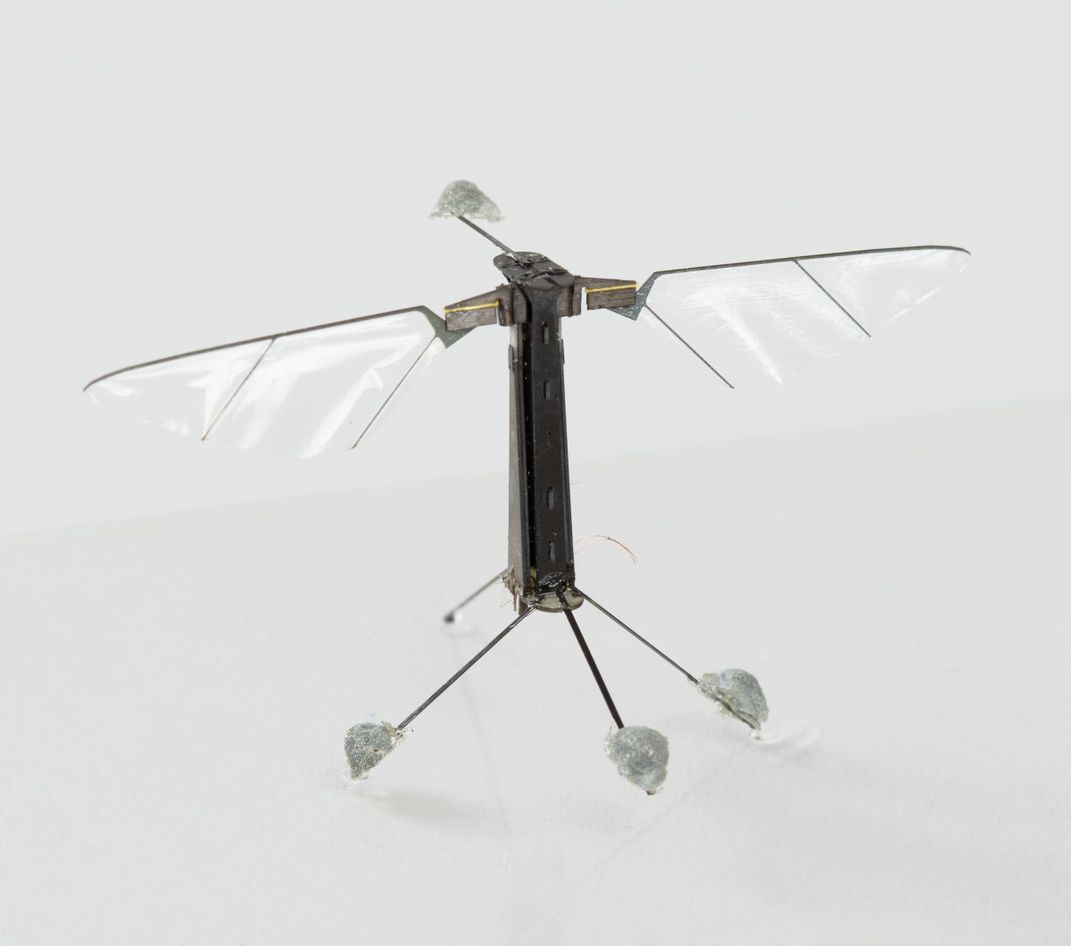
“It was like Raiders of the Lost Ark,” Ingber recalls. “There were rooms full of Bakelite, pottery, posters, textiles, chairs.”
Was he daunted?
“I’m a researcher and a very visual person,” he says. “I’d already studied the museum’s website and looked at catalogs from past exhibitions. I knew what I was looking for.”
Working with four members of the institute’s faculty—Jennifer Lewis, Joanna Aizenberg, Radhika Nagpal and Pamela Silver, Ingber settled on 60 objects meant to show how nature inspired them.
Some selections were deeply personal.
When Ingber was an undergraduate at Yale studying molecular biophysics and biochemistry, he was fascinated by the arts.
He finally took an art class, where he saw a work inspired by the sculptor Kenneth Snelson (1927-2016). It was an unusual piece composed of six rigid wooden struts pulled up at different angles into a three-dimensional form and kept open through connection with a series of elastic cords. Snelson, whose sculptures used the same design principles but were fabricated from stainless steel poles and tensile stainless steel wires, had studied with the American architect, futurist and inventor Buckminster Fuller.
Snelson realized that, like a spider web, tensional forces can be used to stabilize natural structures. Fuller took credit for this and named the concept “tensegrity,” or tensional integrity.
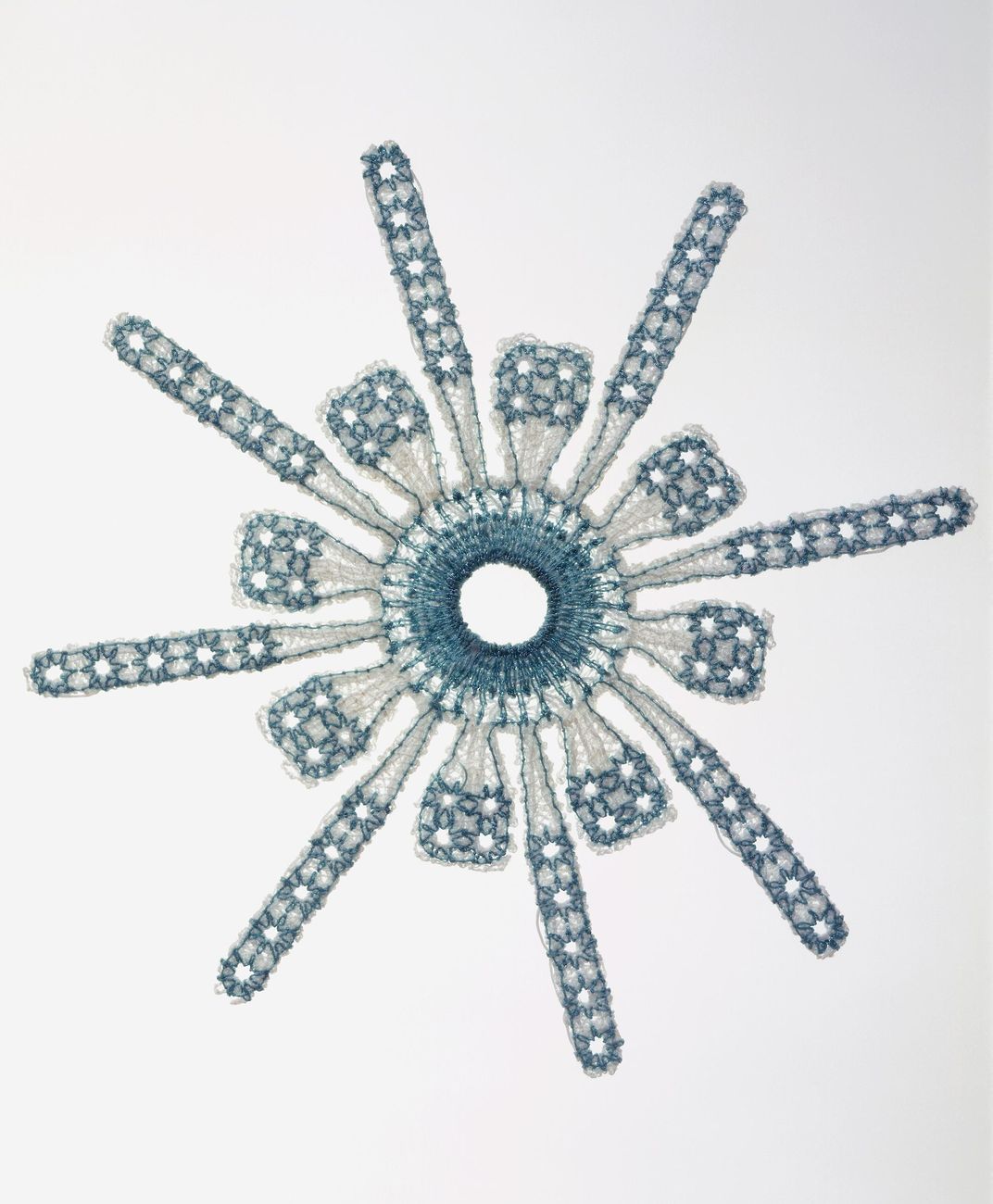
To illustrate the concept of tensegrity, the exhibition displays a facsimile of the application for a U.S. patent for the geodesic dome construction that Fuller filed with the government in 1951 as well as a model of Snelson’s rod-and-wire sculpture.
“Tensegrity totally changed my path in life,” Ingber recalls.
“Tensegrity also explains how we stabilize our bodies, which are composed of multiple stiff, compression-bearing bones interconnected by tensed muscles, tendons and ligaments.”
Tensegrity inspired Ingber’s discovery that the same fundamental principle governs how molecules, cells, tissues and organs assemble, stabilize shapes and control functions.
As McQuaid explains, Ingber noticed that living cells contain “cytoskeletal struts and tensed cables.”
Other examples of bio-inspiration that visualize how artists and designers have utilized this approach throughout history are more literal. We see how spirals in nature, say, in seashells, are reflected in spiral staircases, Thonet bentwood chairs, shell-adorned Danish porcelain tea sets and a pair of earrings Ted Muehling designed.
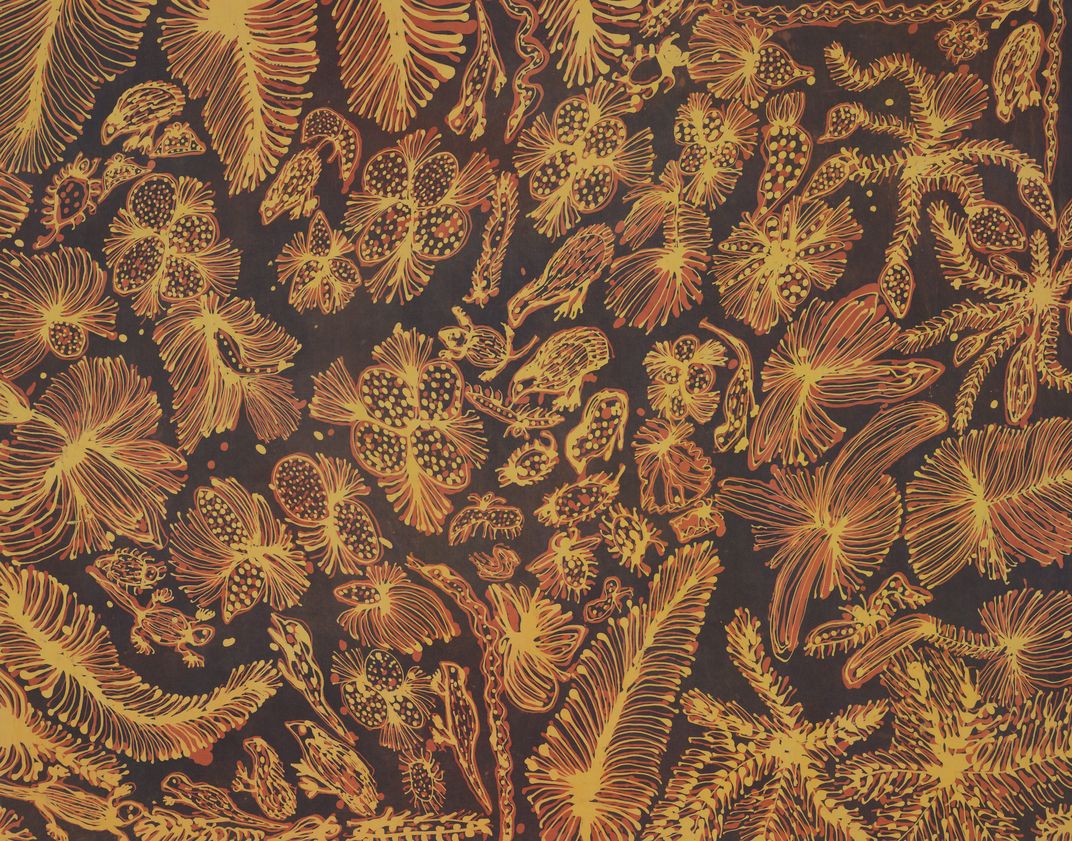
More complicated is the meaning of the video showing the bioinspired Kilobots, the mini-robots, in action. TED Talks star Radhika Nagpal heads the Self-Organizing Systems Research Group at the institute. Her group created computer programs that could energize the Kilobots to split up and then reorganize in new configurations, the way ants do in nature.
“When I look at the intricate patterns of cells in a fruit fly wing, or the intricate patterns of fish schools that move as one through a coral reef, I am always struck by the feeling of unity—a single entity composed of many pieces,” Nagpal writes in the exhibition brochure. “Self-assembly occurs across natural scales, in a way that is in synergy with the materials and organisms, and in a way that is self-stabilizing and self-repairing. That idea has profound meaning for engineers like me, both in computation and physical design of robots.”
Her hope is that one day, using her programming to guide collective behavior in robots, she will be able to tell swarms of mobile robots to make sand bags and deliver them to flood sites, or build bridges or work in zones too dangerous for humans.

Some of the examples in the exhibition were designed to solve very specific problems, like cutting down on carbon dioxide and producing oxygen.
Institute faculty member Pamela Silver and her collaborator Dan Nocera are trying to make a bionic leaf that can achieve artificial photosynthesis. It will use a solar energy cell to split water into hydrogen and oxygen. Genetically engineered bacteria in the leaf will then consume the hydrogen and carbon dioxide in the air. The leaf also produces fuel, as it does in a living plant, while releasing oxygen. A schematic design on paper is meant to show how the bionic leaf would operate in the real world.
Finally, there is the ingenious Organ-on-a-Chip, which was designed by Ingber and his postdoctoral fellow Dongeun Huh in 2009. This is a device about the size of a thumb drive made of clear silicone rubber with two tiny hollow parallel channels cut into it that are separated by an even thinner porous membrane.
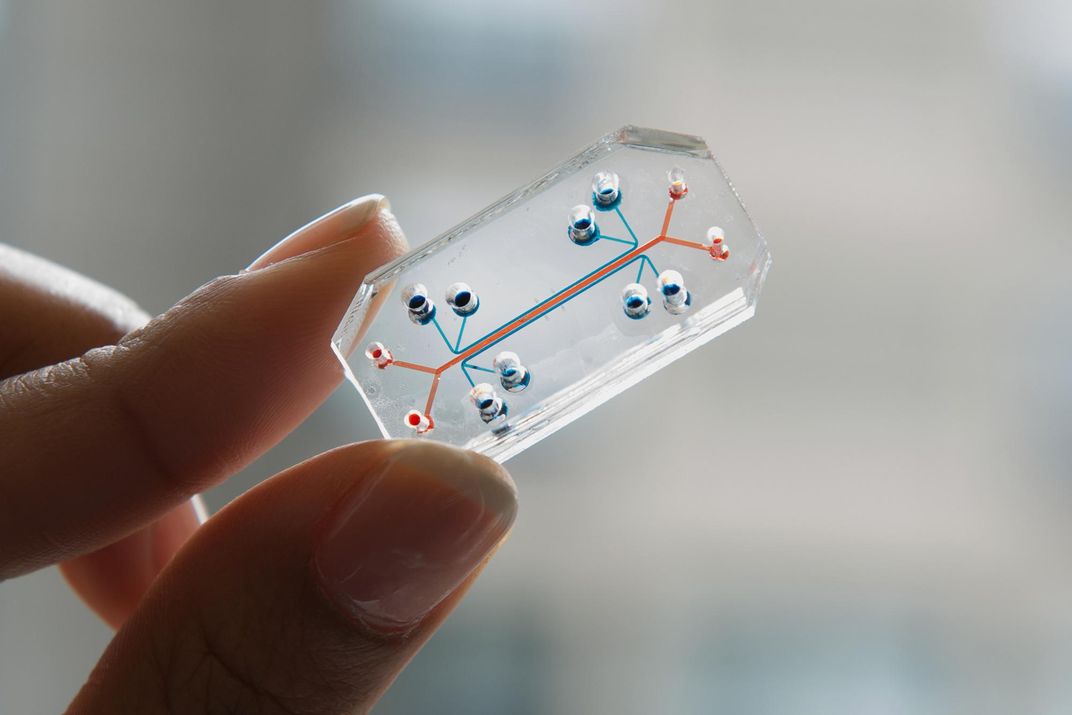
One channel is filled with human cells, say, from a lung, and the other with blood vessel cells and a white cell-containing solution that flows through it; tissues in the device can also be made to pulsate like a human lung or intestine (to replicate the function of a living human organ). Onto this microfluidic culture device scientists insert drugs or bacteria or whatever to test the reaction of the human organ involved.
When perfected, this chip could provide a potential alternative to drug testing on animals and humans. It may also greatly reduce the cost and time required to get new medicines to the market.
The Organ-on-a-Chip has been patented and is now being commercialized by a startup called Emulate, Inc.
These are just a few of the many examples of nature-inspired inventions in the show. It is a dense exhibition but worth the time it takes to absorb it. The science is thrilling.
“Wyss Institute Selects: Works from the Permanent Collection,” curated by Don Ingber, working in collaboration with his co-faculty, Joanna Aizenberg, Jennifer Lewis, Radhika Nagpal, and Pamela Silver, of the Wyss Institute for Biologically Inspired Engineering at Harvard University, is on view through March 8, 2020. The Cooper Hewitt, Smithsonian Design Museum is located at 2 East 91st Street in New York City.
/https://tf-cmsv2-smithsonianmag-media.s3.amazonaws.com/accounts/headshot/wendy_new-1.jpeg)
/https://tf-cmsv2-smithsonianmag-media.s3.amazonaws.com/accounts/headshot/wendy_new-1.jpeg)